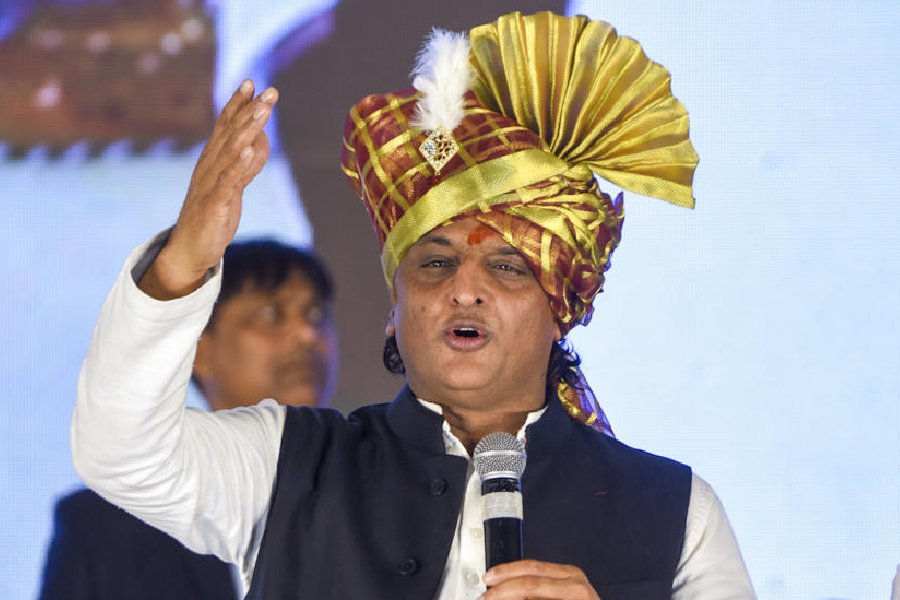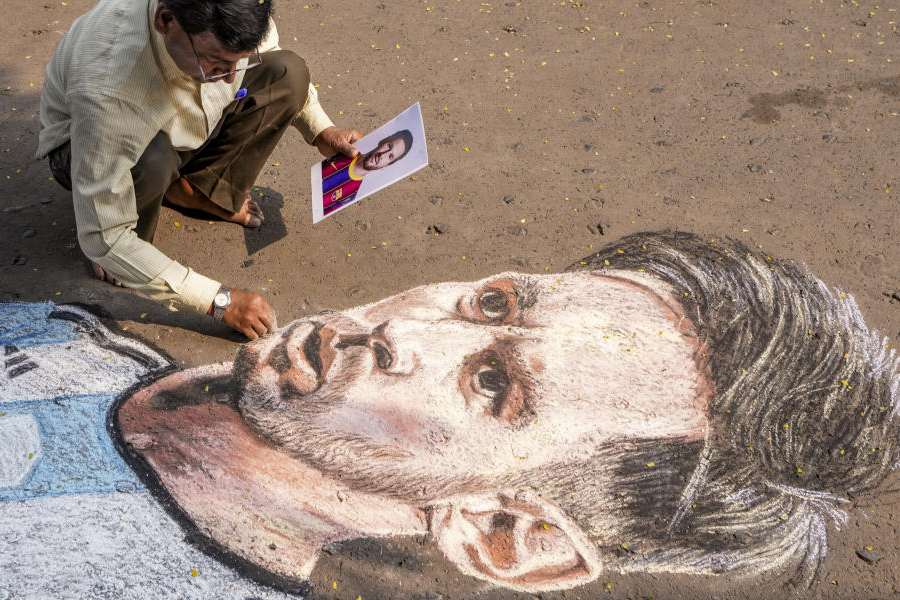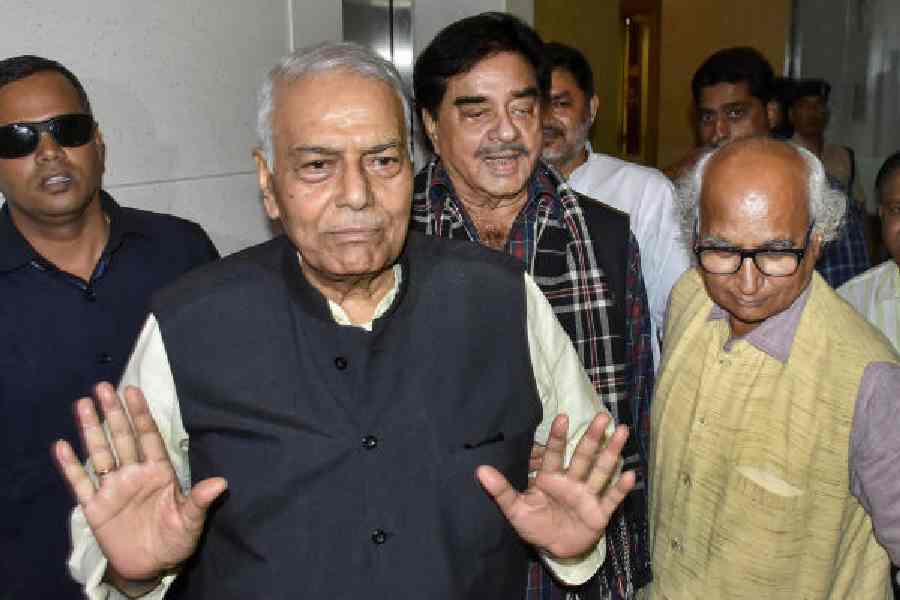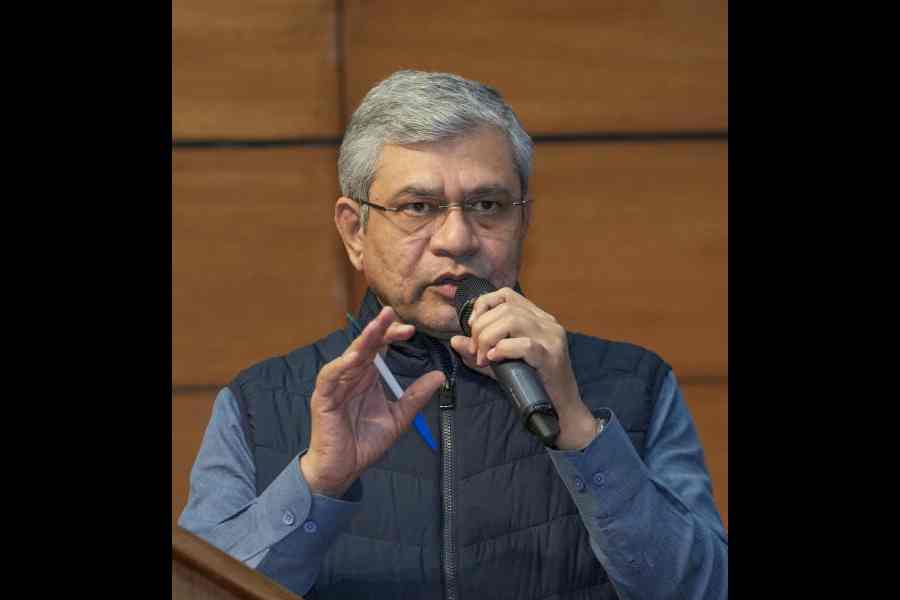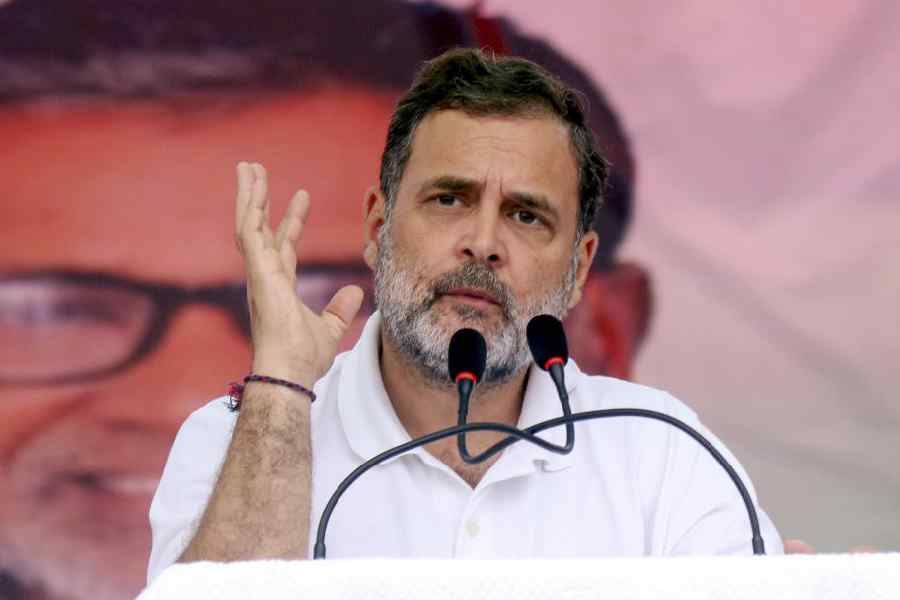 |
| Prahallad Natak popularly known as ‘Raja Nata’ being played rarely in Ganjam district. Picture by Gopal Krishna Reddy |
Berhampur, Dec. 28: The days of “Prahlad Natak” (popularly known as ‘Raja Nata’) are numbered. The 150-year-old dance form that has enthralled people over the years is fast fading away.
Fifty-eight-year-old Khali Behera, who has been an exponent of this folk dance form for the last 44 years and has been performing as Hiranyakashipu since 1973, is not interested to engage his only son Chanda Charan (17) to keep the art alive.
“I am struggling to feed my wife, two daughters and a son. I hardly earn Rs 1,000 from about a dozen performances a year. How can I sustain myself and my family with this profession?” he said. These days, Behera engages himself as a farmer, which at least allows him a hand-to-mouth existence.
Royal patronage had boosted Prahlad Natak in the olden days. But lack of patronage and financial support to artists by the government today has pushed the art near its death, said Behera.
Prahlad Natak was authoured by Gaurahari Parichha (1798-1897), a poet and musician of Paralakhemundi (present the district headquarters of Gajapati). Parichha had dedicated the verses to the erstwhile Raja Saheb of Jalantar Ramakrushna Chottaray, who popularised the dance form with his royal patronage, said Kamalakant Kar, who has penned a 1000-page book titled “Prahlad Natyambruta” or “Varaha Nrushinhamruta” that is yet to be published.
Though an engineer by profession, Kar is a scholar and critic of Prahlad Natak and goes to far-off places to enjoy performances. He even has a small library of books related to Prahlad Natak at his residence.
“Unfazed by the onslaught of time and lack of patronage, many artists of Prahlad Natak including Hiranyakashipu, popularly known as Raja, Rani Kayadhu, Prahlad and Sutradharas still chug on to keep the art alive with utmost dedication and perseverance. What mesmerises the audience is the extraordinary skill of word power in the verses, swiftness in the movement of the performers and the high-pitched voice of presenting the theme,” said Kar.
However, the use of brass-nails for Hiranyakashipu and live snakes for Prahlad has been prohibited during performances for the last few decades following some mishaps. The number of professional ‘Raja’ has come down from 150 to only 20 in southern Orissa.
Prahlad Natak draws heavily upon the traditional music of Orissa, which, though influenced by both Karnatic and Hindustani music, has a distinctive character of its own. There are seven talas including ektal, rupak, jhumpa, triputa, adi, asta tal and dhruva. The musical instruments used in Prahlad Natak are harmonium, mardal, gini (percussion) and mukhabina (like a sahanai). Both vocals and instrumentals are used to intensify the dramatic effect of Pahallad Natak, which consists of 127 verses.
John Emy, a professor at the US’s Brown University had conducted extensive research on this art form during 1980-82 and brought it to the notice of the world.


